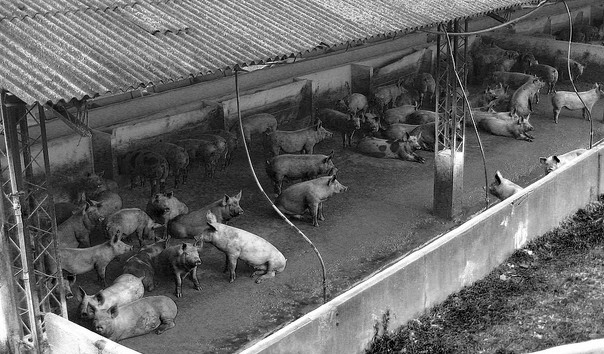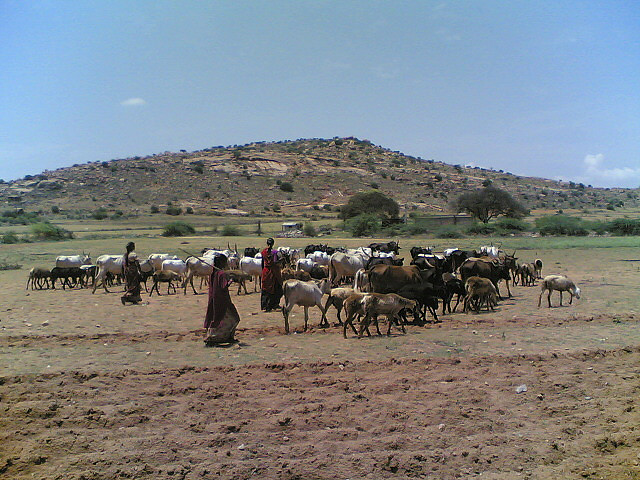Podcast: Play in new window | Download
Subscribe: RSS

Confined, crowded and stressed meat animals like these pigs are given 29 million pounds of antibiotics every year in the US, 80 per cent of the available supply, to make sure they grow. As a result, the seven million pounds administered to humans are becoming less effective. (Photo by Victor Sounds/Flickr)
This summer, the US Department of Agriculture received a report it had commissioned on the rise of infectious bacteria that are resistant to antibiotics. The report — not a study, but a survey of existing studies — warned of a “growing public health concern worldwide” as more and more people are sickened and killed by infections against which modern medicines are helpless. (Just one of them, MRSA, now kills more people every year than AIDS.) And it was a powerful indictment of industrial agriculture’s role in creating these so-called “superbugs.” So the USDA did just what you would expect the government regulator of industrial agriculture to do: it buried the report.
Continue reading








